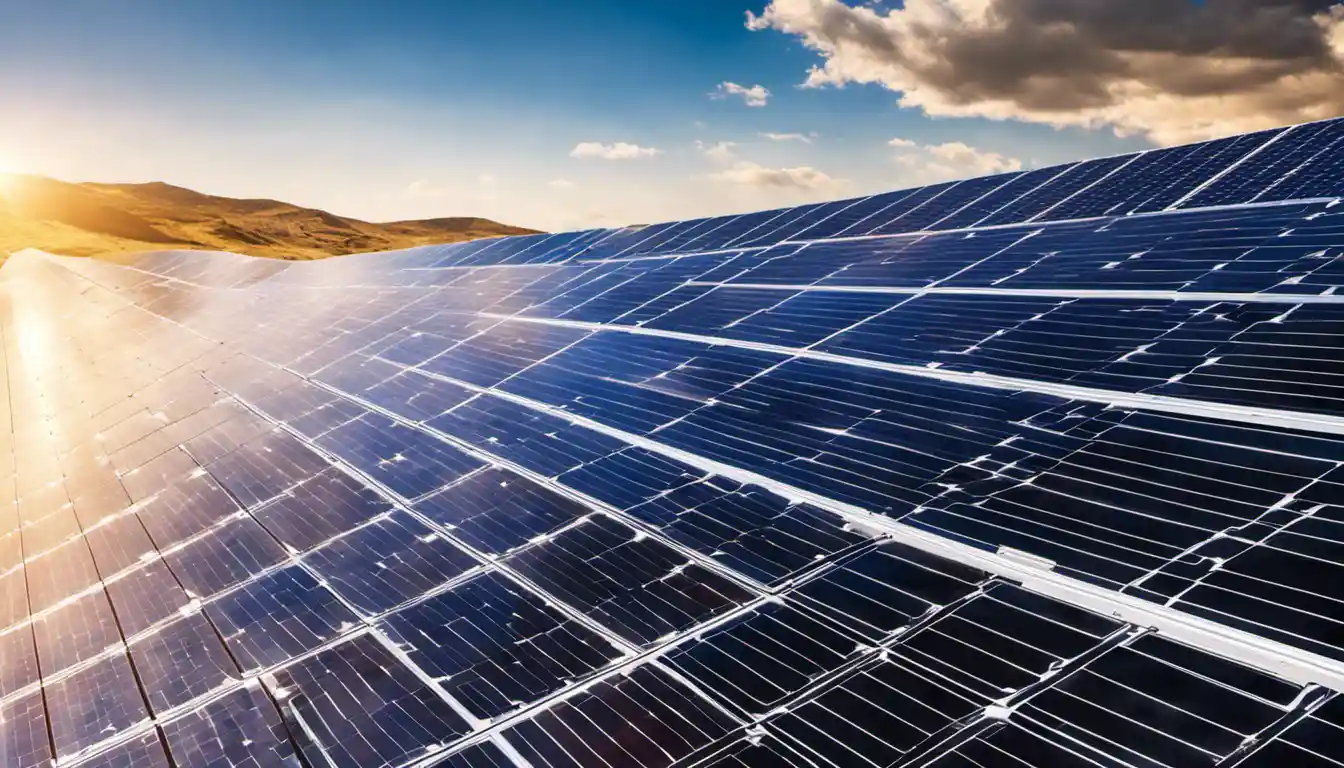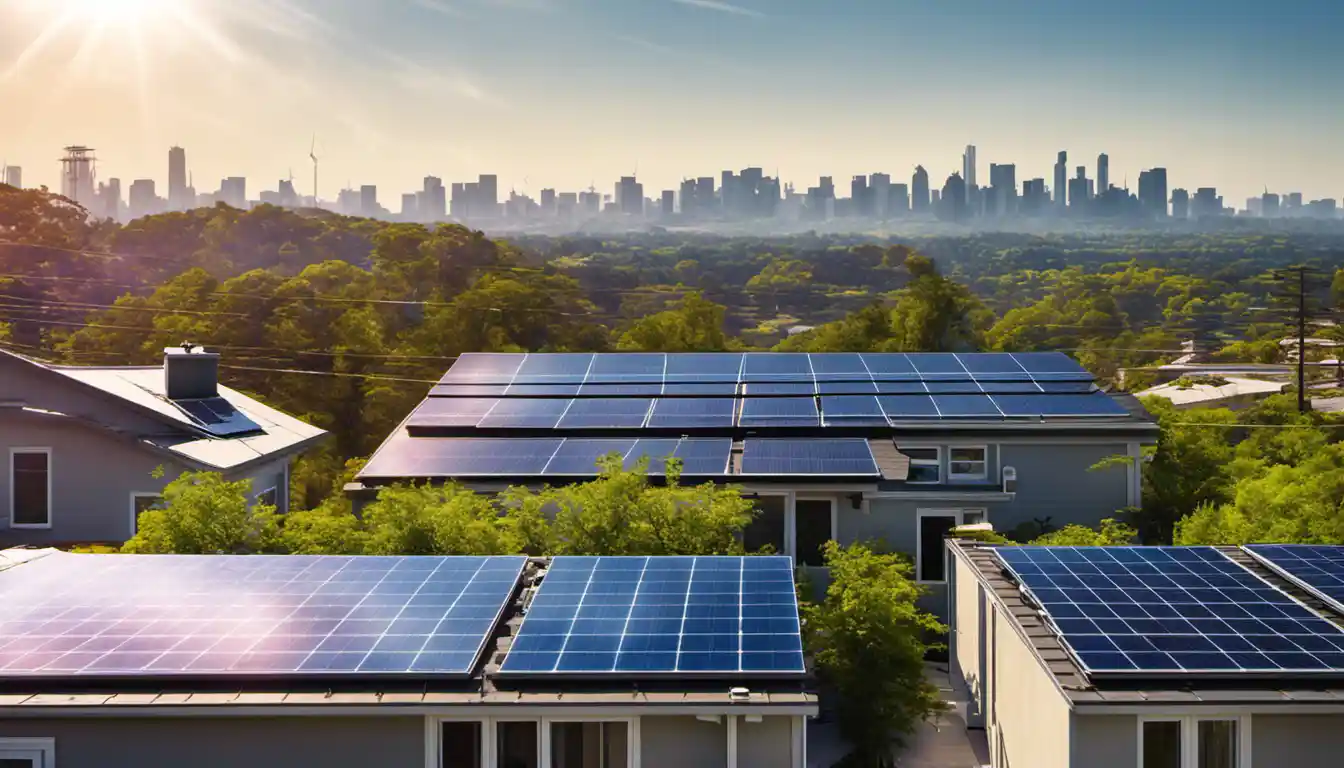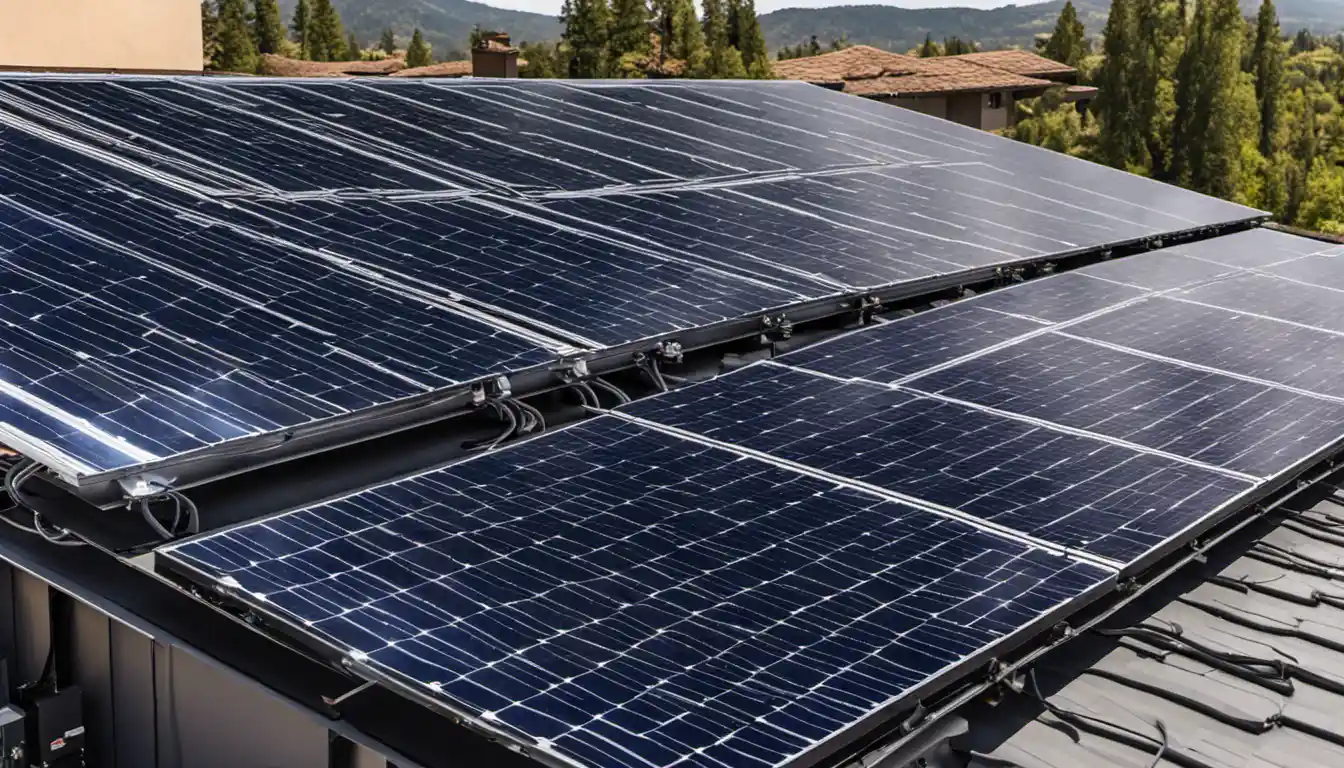Understanding a Grid Tie Solar System
To set up a grid tie solar system, you first need to mount the solar panels on your rooftop or eligible space and then connect them to a grid tie inverter. This inverter is then hooked to your home’s electrical panel, which is also linked to the power grid. Remember, a professional service is recommended since the process involves working with electrical wiring, and it is critical to comply with all local regulations and safety measures.
What is a Grid Tie Solar System?
In the simplest terms, a grid tie solar system, also known as a grid-connected or on-grid solar system, is a solar setup that is tied to -connected to- the traditional power grid. While the sun shines, it provides energy to your home, and excess energy is sent back to the grid. At night or during overcast days, your home pulls power from the grid. It’s a seamless back-and-forth between your solar setup and the grid. Intrigued? Dive deeper into what a grid-tied solar system is here.
Comparison with Other Solar Systems
The primary competitors to a grid tie solar system are off-grid systems (entirely independent) and hybrid systems (a blend of grid and batteries). While both alternatives have their usefulness, grid-tied systems are the most economical due to feeding power back to the grid. This action can generate credits, reducing, or even zeroing, your power bills.
The Functionality of a Grid-Tied Solar System
How does it work? Simple, anytime the sun shines, your panels generate power. This solar energy is then converted into usable AC power via the inverter and feeds electricity into your home. Any energy your home doesn’t use, goes back into the grid.
The Pros and Cons of a Grid-Tied Solar System
The primary advantage of a grid tie solar system is the cost-effectiveness. Not only are grid-tied systems cheaper to install due to lack of batteries, but the ability to sell energy back to the grid can also result in significant savings.
However, it’s not all roses. Grid tie solar systems are dependent on the grid. This dependency means if the grid suffers a power outage, so does your home, even if the sun is shining.
The Essentials of a Grid-Tied Solar System Setup
So now, you’re up to speed with the lingo and how a grid-tied solar system functions, we can begin to explore how to set up a grid tie solar system. The process involves several essential aspects, which are detailed below.
Necessary Equipment for a Grid-Tied Solar System
The primary equipment you’ll need is photovoltaic panels (these capture the sunlight), a grid-tie inverter (to convert the power), mounting hardware, and relevant electrical safety gear.
Major Component Parts of a Solar Energy System for Your Home
Your solar energy system will consist of solar panels (photovoltaic or PV panels) which convert sunshine into electrical energy. Depending on your household’s size and power needs, the number of panels will vary. It’s vital to have a high-quality grid-tie inverter that effectively converts the DC power from the panels into AC power.
Choosing High-Quality Solar Modules

Not all panels are created equal. To maximize your grid-tied solar system, select panels from reputable manufacturers with good efficiency ratings.
Grid-Tied Solar System: Connection Types
Finally, we’ll discuss the two main connection types of a grid-tie solar system.
Load-side connection
This connection type is easier to handle, cheaper, and preferred in residential installations where the electrical load is not substantial.
Line or Supply-Side connection
This connection type is necessary for larger systems where the load-side connection can’t handle the electrical load.
Now, we’ve covered the crucial components. Let’s plunge into the core topic — how to build a grid tie solar system.
The Building Process for a Grid-Tied Solar System
How to build a grid tie solar system for your home is what we’re here for. The first step on this journey is creating a solid foundation. So let’s get started.
Importance of Appropriate Solar Energy System Racking
Secure mounting is a must. We’re often subject to high winds and storms, and the last thing we want is our investment flying about the neighborhood. A sturdy, professional-grade solar racking system is worth the investment.
Selecting a Suitable Solar Inverter
The inverter, as we discussed earlier, is a critical part of your grid tie solar system. It’s essential to choose one with excellent ratings and reviews from a well-established brand.
Balancing Other System Components
While the panels and inverter are big-ticket items, don’t forget about the small details like appropriate cabling, connectors, or junction boxes. These components, although small, are pivotal in the smooth operation of your system.
Excess Power Management in Grid-Tied Solar Systems

During particularly sunny periods, you might produce more electricity than you consume — a delightful problem! However, what happens to that electricity?
Dealing with Excess Solar Power Production
Most grid tie solar systems are set up for net metering, which allows for the sale of this electricity back to the grid.
How Grid-Tied Solar System Functions when the Sun Goes Down
As we’ve touched on earlier, when the sun goes to sleep, your home will draw power from the grid. This process is where grid tie systems shine — seamless transition between power sources without so much as a flicker of your lights.
Understanding Net Metering in Grid-Tied Solar Systems
Net metering measures the difference between the electricity you sell to the grid and the amount you buy. Positive net metering can result in credits or even payments for the surplus power you generate.
The Impact of Seasonal Change on Grid-Tied Solar Systems
Solar output can vary a lot with the seasons. The impact of these changes can be significant but also manageable.
Grid-Tied Solar System Operation in Spring and Fall
During these moderate seasons, you can expect your solar production to be in balance with your usage as days are moderately long and sunshine is plentiful.
Grid-Tied Solar System Operation in Summer
Summertime is super sunshine season, which means extra power production. Enjoy reduced or even zero energy bills!
Grid-Tied Solar System Operation in Winter
Winter can be a tough time due to shorter days, and less sunshine can result in lower solar production. But with a grid-tied system, your home always stays powered up.
Grid-Tied Solar Systems and Outages: What to Expect?

Remember, in a blackout scenario, your grid-tied solar system also shuts down. This safety measure is known as “anti-islanding,” and it’s a safety measure to protect workers repairing the grid.
Financial Aspects of Setting Up a Grid-Tied Solar System
The installation of a grid-tied solar system can be a substantial investment, but there are financial incentives that can help offset the system’s initial cost.
The Cost of a Grid-Tied Solar System
The price for a residential grid-tied solar system varies depending on numerous factors such as your geographic location, system size, and components selected. Furthermore, the local cost of labor and permitting fees can significantly affect overall prices.
Economic Incentives to Ease the Financial Burden
There are plenty of financial incentives to install a grid-tied solar system. These incentives come in the form of federal tax credits, state incentives, and SRECs (Solar Renewable Energy Certificates). Exploring them can help you offset or even profit from the system’s installation.
Installing a Grid-Tied Solar System: Step-by-Step
Oh, we’re feeling the excitement now! You now understand why you want a grid tie solar system and what components make up a system. It’s all about learning how to install a grid tie solar system next.
Preparing for Installation: Things to Consider
Before starting, some planning will make installation go smoother. Make a checklist. Have you arranged all necessary permits? Do you have an understanding of how to use the tools required or need to arrange for their delivery?
Accurate Installation: Ensuring Efficiency and Safety
Solar panel installation is not a DIY project for everyone. It requires working at height and with electrical components. Therefore, it is often rational to hire professionals who are trained to install these systems correctly and safely. They know how to optimize the panel’s positioning and angle to ensure maximum sunlight absorption and connect the system to the grid correctly per local rules and regulations.
Post-Installation: Essential Measures and Checks
Once the system is installed, spend some time familiarizing yourself with it. There should be a shut-off procedure, and regular checks can promote longevity and ensure safety.
Leveraging Your Grid-Tied Solar System: Key Takeaways
So that’s it, you’re now a residential solar expert! You’ve learned how simple and beneficial it is to install a grid-tied solar system. Go forth and generate your sunshine power.
Remember, a professional solar install team is invaluable. They’ll ensure your system is optimally set up to bring you electricity bill savings year-round. Whether you’ve been thinking about green energy for a while or inspired to consider the benefits more heavily now, there’s no better time to choose your grid-tied solar system.



